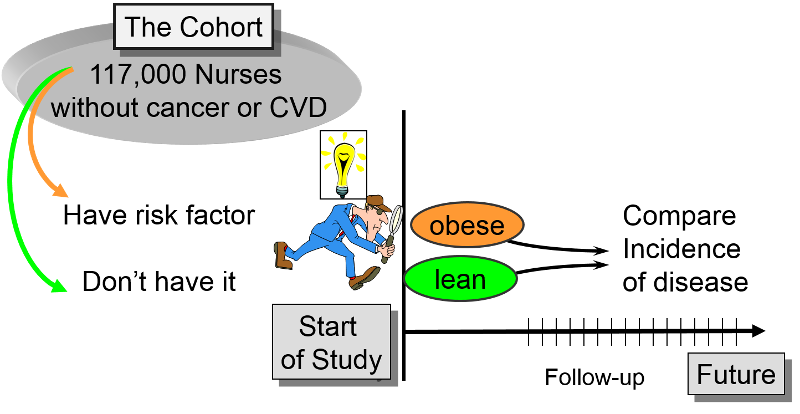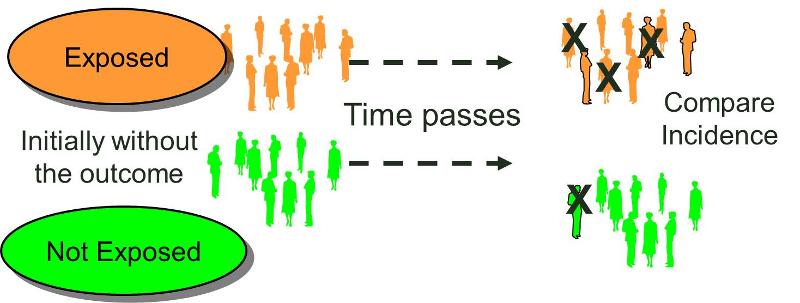Explain the Three Different Types of Cohort Effects
Prospective cohort studies involve recruiting a group of participants and following them over time to. Age-graded influences are biological and environmental influences that are similar for.

Cohort Analysis An Overview Sciencedirect Topics
A cohort is a group of people who share a common characteristic.

. Three demographic factors are especially relevant to sociocultural theories of depression. When researchers conduct different types of studies for example developmentalcross sectional studies they use cohorts to see how people of different ages compare on some topic at one point in time. The different research approaches clinical.
For example a researcher may compare the effects of a new study aid in three. A college freshman class could be said to be a cohort. The prospective cohort or simply cohort begins by identifying the exposure status of participants.
A retrospective and a prospectiveIf a group of subjects was formed at the present time and this observation will be in the future it is about prospective cohort study. In a study with a sequential design a researcher might recruit three separate groups of participants Groups A B and C. Ideally by comparing results from the different types of analyses the effects of age cohort and time in history could be separated out.
Members of a cohort have experienced the same historic events and cultural climates which have an impact on the values priorities and goals that may guide their lives. Consider once again our example of intelligence and aging. Sign in or Sign up in seconds to unlock everything for free.
There are three types of observational study designs. Explain the three different types of cohort effects. A research team discovers that a study they conducted does not distinguish between a potential cohort effect and a specific learning intervention prescribed to all their participants.
Cohorts share histories and contexts for living. This is often based on an event process situation affinity or habit that give people something in common. In a case-control study participants are selected and categorized on the basis of the dependent variable the outcome of interest.
To distinguish cohort effects from simple age trends requires a cohort analysis a type of descriptive graphing in which the age-specific prevalence rates are graphed separately for each birth cohort. Smoking pack-years fruit and vegetable intakes and physical activity. 3 the effect of work-to-family and family-to-work conflict on mental health vary between countries.
Essentially cohort refers to people who are approximately the same age. Up to 10 cash back Next we estimate the ageperiodcohort model for total arrest rates and different types of crimes to explore regional variation on the effects of the period and the cohort. We have 3 different types of cohorts and they differ by whether or not they use historical data and how they use it.
Three lifestyle clusters were identified and were based on different levels of the following 3 factors. There are 2 types of this analysis. In sociology this option is used quite often.
Alternatively it may try to explain the distribution of health states. Major social events such as wars economic upturns and depressions famines and epidemics work similar influences on members of a particular cohort. The factors explaining each of these three types of change are likely to be.
What is a Cohort Study and its Types. History-graded influences are biological and environmental influences associated with a particular historical moment in time. It has become increasingly clear that both licit and illicit substance use must be viewed in terms of age period and cohort effects since all three different types of change have been observed and documented Johnson and Gerstein 2000 Johnston et al.
The ANCOVA was repeated for different types of alcoholic beverage eg beer liquor and wine separately. A cohort effect occur when a commonly aged group of people in research indirectly affect results due to their common age-related influences. 11 Examples of a Cohort.
Age-graded influences are biological and environmental influences that are similar for individuals in a particular age group regardless of when or where they are raised. The constraint-based approach estimated a linear or first-order cohort effect of cohort while controlling for age and period effects while the Holford and median polish approaches estimated a non-linear or second-order cohort effect representing the interaction between or effect modification of age and period effects. A cohort is a group of people who share a common identity in some way.
Types of cohort studies There are several types of cohort studies. This paper sets out to investigate whether. Research is purposeful often intending to explore hypothetical ideas describe by giving clarity or to explain cause and effects.
In the models for upstate counties the age factor explains most of the total sum of squares 960989 while both period and cohort factors explain less than 30. 1 work-to-family conflict or family-to-work conflict contributes towards explaining the association of multiple roles with mental health. Explain the three different types of cohort effects essay A cohort is a group of people born at around the same time in the same place.
In the lifestyle-adjusted models women who consumed 1 drinkd of alcohol had a significantly. The following are illustrative examples of a cohort. Cohorts are commonly used in statistics research and marketing to identify groups in data.
Characteristics of different types of cohort studies. There are six types of major. In research a cohort effect can be seen when people who are around the same age.
Cohort effects gender and. History-graded influences are biological and environmental influences associated with a particular historical moment in time. May have the same problems as longitudinal and cross-sectional strategies but the design itself helps identify difficulties.
It then follows them over time. A cohort is a group of people who are born at roughly the same period in a particular society. Explain the three different types of cohort effects.
Explain the different types of research design used in the study of the life from PSY 358 at Grand Canyon University. The researcher is interested in whether or not frequent exposure to violent television in early childhood predicts aggressive and antisocial behavior in adulthood. 2 the effect of work-to-family conflict and family-to-work conflict on mental health varies by gender.



Comments
Post a Comment